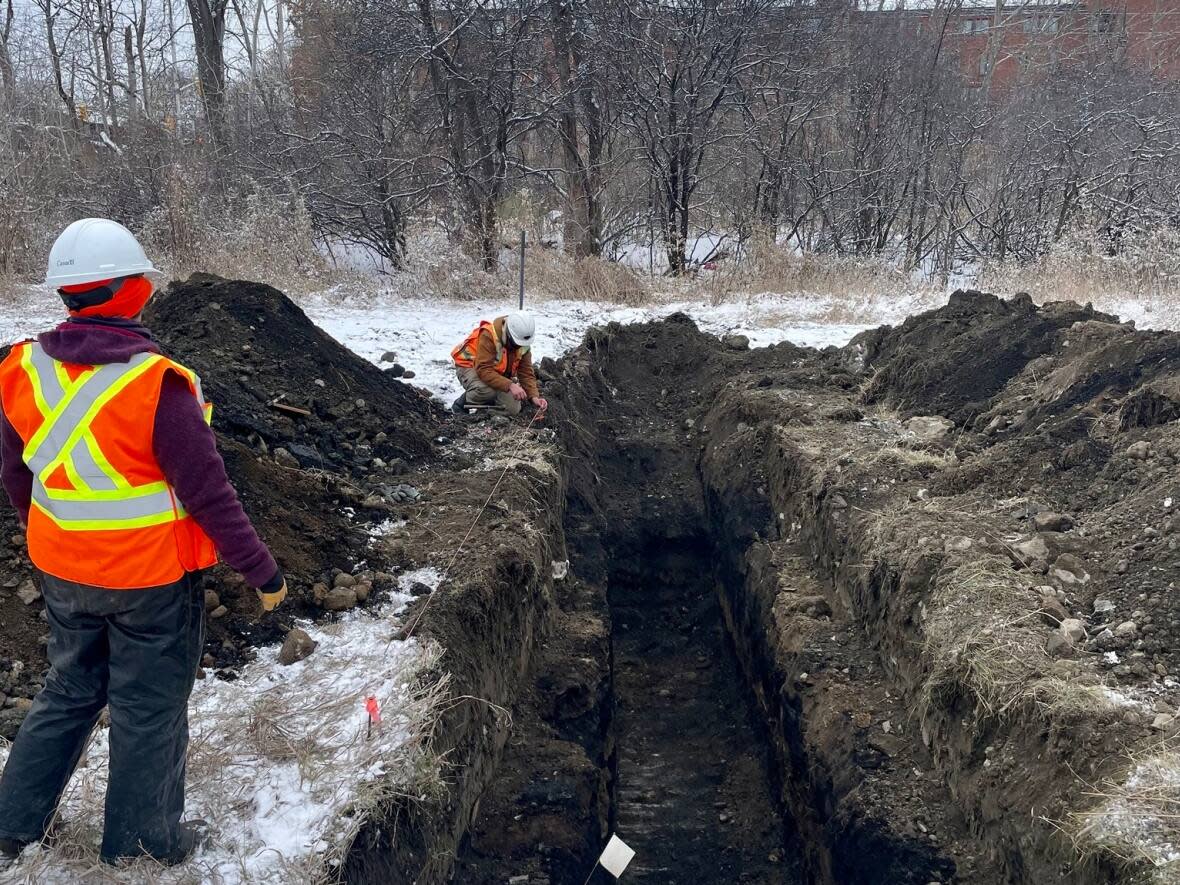New archaeological dig at site of potential NHL arena at LeBreton Flats, NCC says

Following the results of two digs late last year, the National Capital Commission is planning another archaeological dig in a section of LeBreton Flats — the potential site of a new NHL arena — this summer, seeking more artifacts related to 19th-century Bytown.
Two historical sites were investigated in November on the north side of Albert Street between Preston Street and City Centre Avenue, commission archaeologist Monica Maika said in a statement.
One of the sites was the Malloch House, which belonged to Edward Malloch, a lawyer and politician who lived in the LeBreton Flats in the 1850s.
Maika said Malloch's house was also used briefly as a brewery in the late 19th century, and the site will be further investigated during the summer.

"Artifacts uncovered from this site could be stored and potentially displayed within future developments at LeBreton Flats," Maika added.
The second dig was conducted at the site of the St. Lawrence and Ottawa Railway warehouse, but Maika said not much was found of the former warehouse and "no further archaeological work will be recommended."
The assessments build on previous archaeological work at LeBreton Flats, Maika said, part of the commission's guiding principle to "honour the past."
Those past investigations documented "extensive historical use of the property, with sites ranging from hotels, to homes, to schools," said Maika.
"No burial sites were identified during the course of these investigations," she added.
Finding burial sites still possible, archaeologist says
Because of that past work, there could be challenges finding undisturbed soil — and thus a burial site — at LeBreton Flats, said Jean-Luc Pilon, an archaeologist and former curator with the Canadian Museum of History.
That doesn't necessarily rule out the possibility one existed, Pilon added.
"It is remarkable how little bits and pieces of the past can survive untouched," he said.

The history of other burial sites found nearby could point to another future discovery, Pilon said. In the 1800s, two different burial grounds were discovered on both sides of the Ottawa River — one near what is now the Library and Archives Canada building and the other near the Canadian Museum of History.
LeBreton Flats is also near the Chaudière Falls on the Ottawa River, which Pilon said was historically known to be very "spiritually important" to Indigenous people in Algonquin territory.
"This place was special. It held very precise meanings. They perceived that there was an entity or a power that resided or inhabited or could be found in and around those falls," he said.

Several other historical artifacts and sites have been found near LeBreton Flats in recent years, Pilon said, including human remains from a former cemetery under Queen Street in 2013 and an ancient Indigenous knife found beneath Parliament Hill in 2019.
"That just raises the possibility that we might be able to find out something that we really didn't know about."
'Archaeology of neighbourhood'
Archaeological digs like these ones are incredibly useful in painting a picture of how people used to live, said Phil Jenkins, a local author who penned An Acre of Time, a book on the history of LeBreton Flats.
Jenkins said he would describe the NCC's digs as the "archaeology of neighbourhood."
"It's evidence of how people used to live as neighbours, of what a neighbourhood was," he said. "I think there's lessons there on how to live with each other in terms of a neighborhood," he added.
In a time where people are mostly concerned with the present and future, uncovering the past is still important, Jenkins said.
"Archaeology is a rearview mirror, I would say. And it's good to check your rearview mirror every now and then so that you don't make mistakes."


